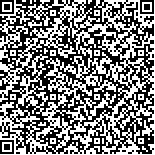下载中心
优秀审稿专家
优秀论文
相关链接
摘要

高分五号(GF-5)号卫星所搭载的大气多角度偏振探测仪(DPC)能够对地球进行多波段,多角度和的连续观测,其数据对研究全球大气云分布及云辐射反馈作用提供新的视角。本文通法国多角度偏振载荷POLDER(POLarization and Directionality of the Earth’s Reflectances)云检测算法为参考,结合DPC多波段反射率、偏振反射率、表观压强等信息开发了一个适用于DPC的云检测算法。算法主要分为3个部分:首先是阈值方法对云像元进行检测,同时引入表观压强对不同高度的云(如卷云、层积云等)进行进一步的条件约束,然后利用865 nm波段偏振反射率对海表反射的太阳耀斑区进行识别,修正了反射率阈值识别云像元时受到的太阳耀斑干扰。为了验证算法的准确性,利用2018-10-01的MODIS的MOD06云掩码产品与本文云检测算法结果进行定性分析,从目视判读结果可以看出本文云检测结果与MOD06产品具有较高的吻合度;随后又利用2018-10-01—04的CALIPSO-VFM数据与本文云检测结果和MYDO6云掩码产品进行定量分析,分别计算了中低纬度区域(60°N—60°S)的云/晴空像元命中率和云/晴空像元错误预报率,计算结果显示算法云命中率均值相较MYD06云掩码产品高出13.501%的前提下云错误预报率仅高出3.561%,可表明该算法在全球中低纬度区域有着良好的云检测效果。本文提出的云检测算法,可为后续DPC的云参数、水汽、气溶胶等研究提供重要数据支撑。
Clouds cover 50 to 70 percent of the earth’s surface and are an important factor in the balance of atmospheric radiation and climate change. The Directional Polarimetric Camera (DPC) carried by the GaoFen-5 satellite can continuously observe the earth in multiple bands, multiple angles, and high spatial resolution. Its data are useful for studying global atmospheric cloud distribution, and cloud radiation feedback provides a new perspective.This study uses the French multiangle polarization load polarization and directionality of the earth’s reflectance (POLDER) cloud recognition algorithm as a reference, and combines DPC multiband reflectivity, polarization reflectivity, apparent pressure, and other information to develop a cloud detection algorithm suitable for DPC. The algorithm is mainly divided into three parts. First, the threshold method is used to detect cloud pixels, and the apparent pressure is introduced to further restrict the conditions of clouds (such as cirrus and stratocumulus) at different heights. Then, the 865 nm band polarization reflectance is used to identify the solar flare area reflected by the sea surface, and the solar flare interference is amended when the reflectance threshold is used to identify cloud pixels.The MOD06 cloud mask product of MODIS on October 1, 2018 was compared with the results of the proposed cloud recognition algorithm to verify the accuracy of the algorithm. The cloud recognition results were in good agreement with the MOD06 products. The CALIPSO-VFM data from October 01 to 04, 2018, the cloud detection results, and the MYDO6 cloud mask product were selected to calculate the cloud/clear pixels hit rate and false alarm rate to further quantitatively verify the accuracy of the cloud detection algorithm.The calculation results show that the average cloud hit rate of the algorithm is 13.501% higher than that of the MYD06 cloud mask product. The cloud error prediction rate is only 3.561% higher than that of the MYD06 cloud mask products, thereby indicating cloud detection effect. The proposed cloud detection algorithm can provide important data support for subsequent DPC research on cloud parameters, water vapor, and aerosols.

